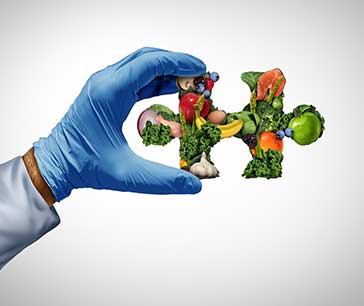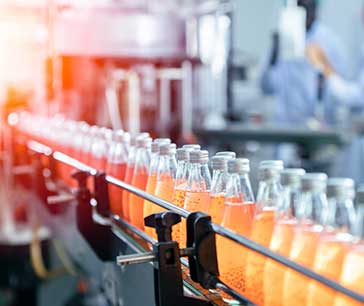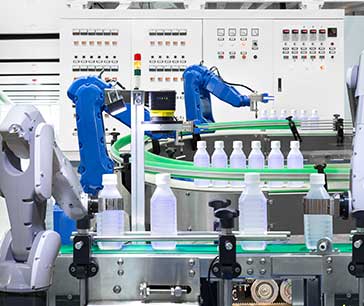Table Of Contents

Roshan Deshmukh

Pooja Parvatkar
The Food & Beverages Industry in 2024: Exploring Opportunities and Overcoming Challenges

The food & beverages industry is on the cusp of major transformation as we are set to enter 2024. However, before analyzing the upcoming trends, a study of the past year is necessary. Several events and influential factors played an important role in shaping the industry in 2023. Studying these events and factors helps in chalking out strategies for the coming year. For this, Allied Market Research offers a detailed industry brief which covers the different aspects of the food & beverages domain. The industry brief mentions certain trends and anticipations, possible challenges and ways to overcome them, technological advancements, and sustainability initiatives. The primary aim of such an industry brief is to empower businesses to take bold decisions and counter the difficulties they may face due to the uncertainties associated with such a dynamic sector.
2023: An eventful year with numerous opportunities
The year 2023 turned out to be an interesting year for the food & beverages industry. The dynamism displayed by the industry was a result of the interplay of several growth drivers, market restraints, and investment opportunities. Also, stakeholder actions in the form of mergers, acquisitions, collaborations, partnerships, and product launches played a part in taking the industry to an altogether new level. R&D activities and technological advancements also contributed to this change. Thus, despite being faced by certain challenges and restraints, the food & beverages industry displayed resilience, and with the help of its strong foundational principles overcame those challenges.
Trends and anticipations for 2024
Food Fortification

Apart from hunger, a major problem faced by many countries is malnutrition. Malnutrition results from imbalance in dietary intake; thus, it results when the food intake is very low, or the nutrients received through food are very low. To counter this problem, a concept of food fortification has been devised which involves boosting the nutritional value of food items. This is done by adding micronutrients such as vitamins and minerals which help in addressing the deficiencies, if any. For such addition of micronutrients, several technologies are used.
The most basic methodologies include premixing, extrusion, and spray drying; these methods are primarily used to fortify cereals with micronutrients. For rice fortification, ultra-rice technology is employed; this technology is extremely popular in regions where rice is a staple food item. Fortification of fats and oils is generally done through a process known as encapsulation. However, these technologies are gradually being replaced by nanotechnology which is one of the most advanced technologies used for food fortification on a large scale. Also, biofortification, which involves cultivating crops with higher nutritional content, has gained prominence in recent times. Ribbon blending and vacuum coating have been the main choice for fortification of flours with micronutrients. Thus, food fortification is a major trend in the food & beverages industry which aims to solve the problem of malnutrition.
Plant-based Foods
The concerns related to global warming and climate change led to a search for alternatives to meat and poultry products. This search has led to the emergence of the plant-based food market which offers sustainable alternatives to almost all meat-based products, including sea foods. One of the biggest reasons behind the surge in demand for plant-based products is that food companies have been able to develop food items that have almost similar taste and texture as that of meat-based products. Also, the nutritional benefits of plant-based foods have pushed many people to opt for these products.
Alternative Proteins
A major trend visible in the food & beverages industry is the increasing adoption and consumption of alternative proteins. Alternative proteins refer to proteins sourced from plants or those produced in labs using modern scientific technology. These proteins obtained from fungi, mushrooms, insects, lab-cultivated origins are slowly changing the dietary preference of global populations. Since traditional protein providing industries such as the meat and poultry market are high greenhouse gas emitters, this shift towards alternative proteins is being welcomed by environmentalists around the world.

Better-For-You Formulations
The post-pandemic period has seen a huge rise in awareness regarding the importance of immunity building. This has propelled the demand for foods that cut down on body fats and regulate body sugar. As a result, better-for-you formulations have shot to fame, with people from different age groups preferring food items which have low fat, sodium, and sugar content and are devoid of artificial flavors and texture modifiers.

Possible challenges the industry might face in 2024
Though the food and beverage industry is set to flourish in 2024, it might face certain challenges and restraints in its path. Firstly, the geopolitical tensions across the globe might result in weakening of global supply chains. For instance, the Russia-Ukraine conflict led to massive shortage of wheat in various countries due to breakdown in transport channels and sea lines of communication. Furthermore, these conflicts have resulted in huge inflation in almost all countries, thus resulting in a general rise in the prices of food items.
Secondly, different governments across the globe are mulling about enacting legislation for reducing plastic pollution. Such governmental regulations and restrictions with respect to plastic and its usage might hamper the food processing industry which relies heavily on plastic for packaging. Thirdly, extreme weather events caused by global warming such as floods, droughts, earthquakes, landslides, etc., have reduced agriculture productivity significantly. The fear of crop failure looms large. Tsunamis and cyclones have affected the growth rate of the fisheries and aquaculture market. Overall, the profitability of agriculture and allied sectors has reduced tremendously. This has further led to many people leaving farming as an occupation and shifting to other sectors for employment.
Technological advancements and sustainability initiatives that could revolutionize the industry in 2024
Food processing robots
A major chunk of the food and beverage sector belongs to the food packaging and processing market. Naturally, the profitability of the food and beverages sector depends on how the food packaging industry fares. In 2024, the food packaging industry is expected to be one of the most promising sectors in the global economy. This is primarily because of the adaptability shown by the sector as far as adoption of technology is concerned. For instance, integration of food processing robots is predicted to augment the productivity of almost all food companies which have adopted this innovation. The advent of AI, machine learning, and robotics is anticipated to help these robots reach their fullest potential, thus strengthening the position of the food processing and packaging industries.
3D food printing
In the simplest terms, 3D food printing refers to production of food items using additive manufacturing techniques like 3D printing. One major reason why 3D food printing has received so much attention is the ability of this technology to manufacture food items which cater to the specific needs of the consumer. Thus, trends such as personalized nutrition are sure to receive major boost owing to this technology. Also, studies have shown that 3D food printing technology is eco-friendly in nature as the amount of wastage is minimal.
Clean labels
A striking trend in the food and beverages industry is the rising preference for clean labels. Clean labels are labels given to food items which are organic in nature and free from chemicals and additives. The rising health consciousness among people and concerns related to biomagnification has led to a food culture wherein organic foods are in high demand. The rapid pace of urbanization and growing proportion of working class has led to surge in demand for nutritional food products, thus driving the industry towards clean labels.
Towards a bright future
Undoubtedly, the future of the food and beverages industry is bright. In fact, the food and beverages industry might be one of the best performing sectors in 2024. The flexibility shown by the sector in its shift to sustainability, technological advancements in the domain, robust nature of the industry, and actions of major companies in the sector will catapult the industry ahead in the coming period.

